
Perspective
22:11, 25-Jan-2019
China urgently needs new structural supply-side reforms
Updated
12:02, 26-Jan-2019
Fu Jun
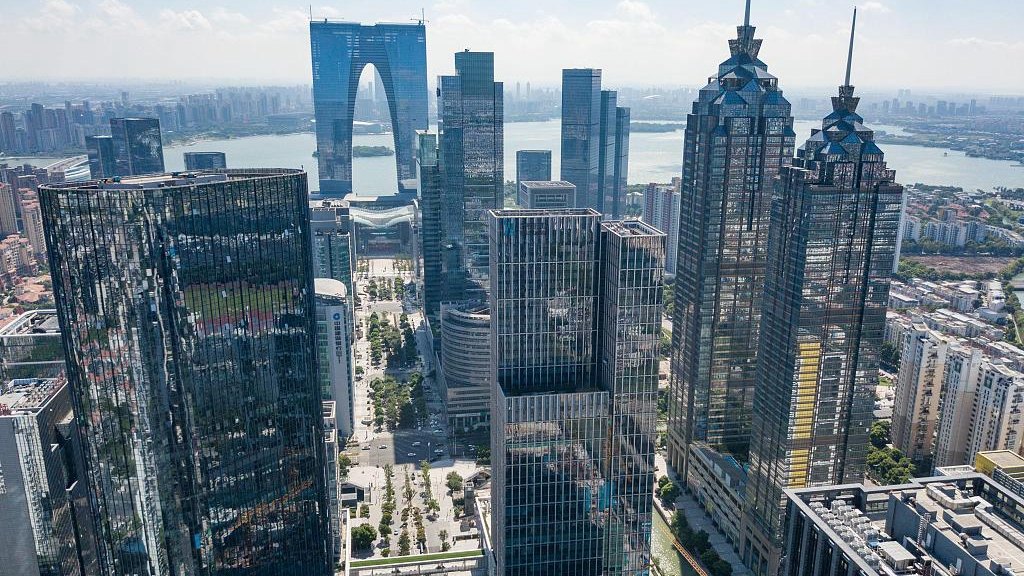
Editor's note: Fu Jun is a professor of political economy and public policy at the National School of Development at the Peking University. The article reflects the author's opinion, and not necessarily the views of CGTN.
China's economy grew at 6.6 percent in 2018, according to official data – still impressive by global standards but slow by its own measures. The slowdown is the worst since the global financial crisis a decade ago, according to some analysts. How do we explain this? Let me try to put the slowdown of the growth drivers in perspective.
First of all, the slowdown validates the growth proposition – the bigger one gets, the harder one grows. Indeed, China (with over 12 trillion U.S. dollars) is already the world's second-largest economy, although its GDP per capita (approaching 10,000 U.S. dollars) is still below the world's average (about 11,000 U.S. dollars). Bad news and good news. Note in particular; a relatively low per capita GDP also indicates growth potential for a catch-up economy.
Secondly, unintended though, the slowdown may also be due to the central government's efforts to contain pollution and fend off financial risks – two of the three ongoing “campaigns” in China, i.e., on the environment, financial risks, and poverty alleviation.
On the environment front, during my recent trips to the southern and interior parts of China, local officials informed me that many businesses had to close down due to tough pollution crackdowns imposed by the central government.
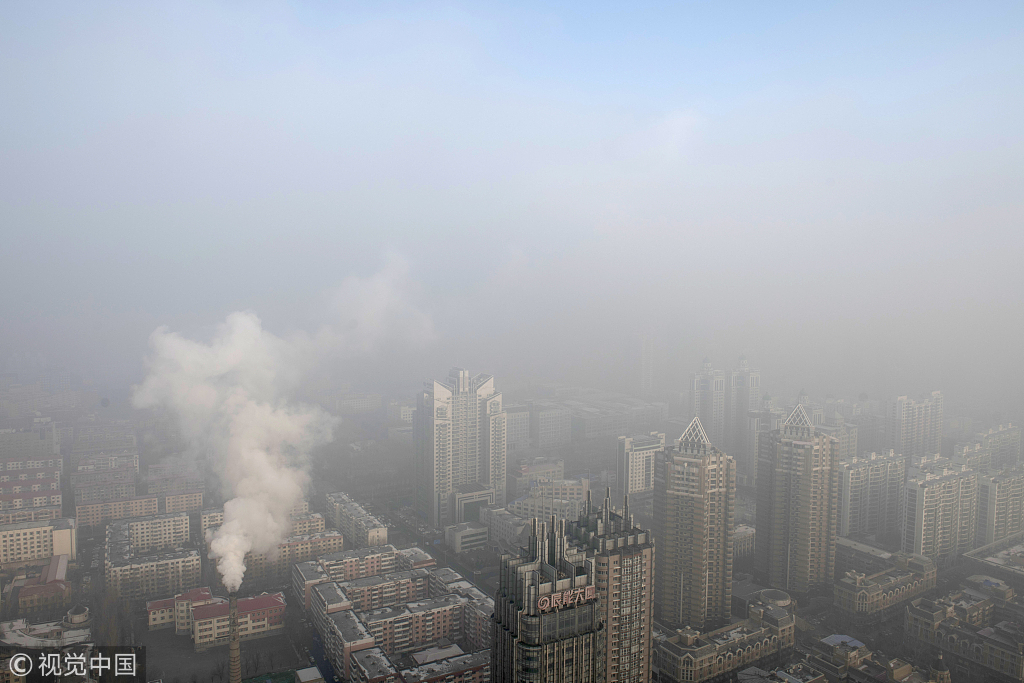
Heavy air pollution in Harbin, Heilongjiang Province, China, January 13, 2019. / VCG Photo
Heavy air pollution in Harbin, Heilongjiang Province, China, January 13, 2019. / VCG Photo
Local entrepreneurs told me that while they are for the environment, they desperately need time to adjust and adapt to new pollution-control standards. The top-down, one-size-fits-all approach has hurt them badly.
On the financial front, primarily due to previous excessive macro-economic stimuli, China's debt to GDP ratio stands high (over 250 percent in 2018, as compared to 180 percent for emerging markets).
And in recent years the country has been trying to deleverage. Theoretically, deleveraging – especially the type that purportedly aims to get rid of zombie firms – could benefit the economy in the long run.
But in reality, as private entrepreneurs complained to me, “bad money drives out good ones,” so to speak – scenarios that one cannot rule out given the mixed nature of the Chinese economy where SOEs continue to enjoy many privileges that private firms do not, e.g., in receiving bank loans.
While operational details remain elusive, aggregate numbers are telling. Whereas China's non-state sector contributes more than 60 percent of the country's GDP and close to 90 percent of job growth, it receives only 20 percent of bank loans; the rest goes to the state sector.
Thirdly, the trade spat between the United States and China, coupled with a lackluster global economy, has also helped dampen China's growth by denting business and consumer confidence.
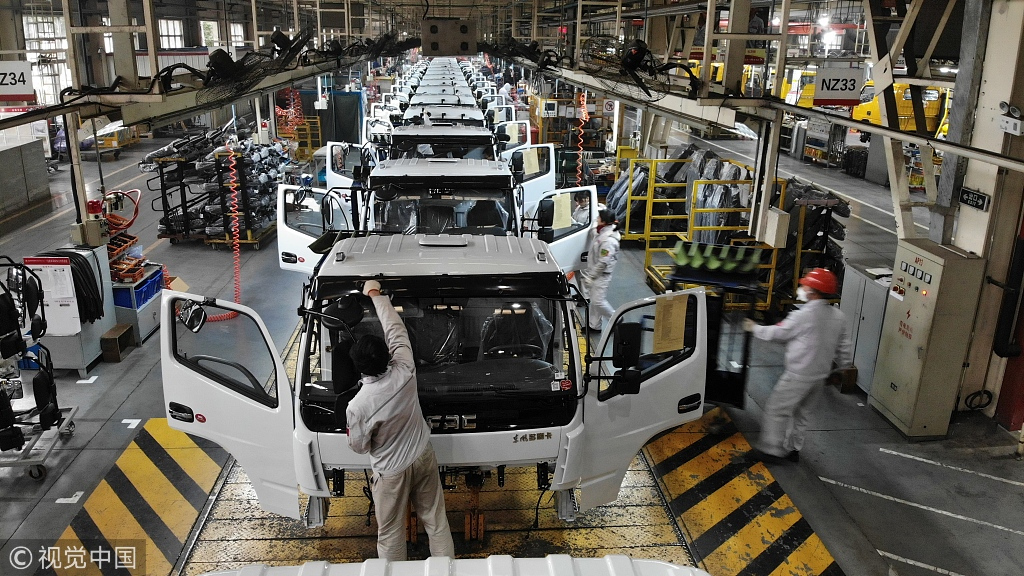
Workers at an auto assembly line in Xiangyang, Hubei Province, China, January 8, 2019. / VCG Photo
Workers at an auto assembly line in Xiangyang, Hubei Province, China, January 8, 2019. / VCG Photo
The auto industry, for instance, has been a major driver of China's economic growth for years and an important barometer of Chinese consumers' willingness to open their wallets. With uncertainties of the U.S.-China trade dispute, of which tariffs on auto imports are a sticking point, auto production in China declined dramatically in 2018 by 4.16 percent, with the December number down over 18.39 percent YoY.
Similarly, in 2018 auto sales contracted (-2.76 percent), with the December figure down over 13.03 percent YoY, according to the China Association of Automobile Manufacturers.
And all of this has happened against the backdrop that, since the world financial crisis in 2008, China has been trying to rebalance from a resource-heavy and export-driven growth model toward a consumption- and services-oriented growth model.
This transition is still underway and by no means pain-free. By 2018 the service sector grew to more than half of the economy. Household consumption, however, was still less than 40 percent GDP, as compared to 70 percent for many advanced economies. In short, the growth of domestic consumption has been less than anticipated to offset the decrease in exports as well as in fixed investment due to overcapacity.
What should Chinese policymakers do in the face of the headwinds? As growth decelerates, China should dynamically rebalance between growth and financial risks, as well as environmental concerns. This is because poor growth would worsen financial stability and vice versa. Understandably, balancing among and toward multiple targets is by no means easy. One has to be constantly alert to both “grey rhinos” and “black swans,” so to speak, all along the way.
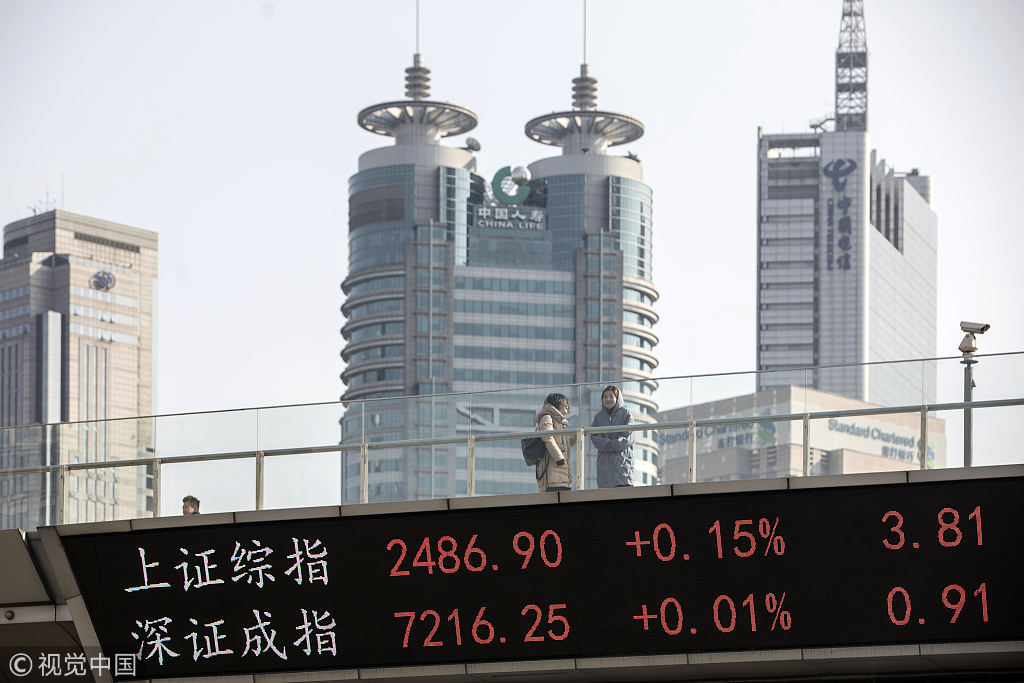
Pedestrians walk along an elevated walkway as an electronic ticker displays stock figures in Pudong's Lujiazui Financial District in Shanghai, China, Dec. 28, 2018. /VCG Photo
Pedestrians walk along an elevated walkway as an electronic ticker displays stock figures in Pudong's Lujiazui Financial District in Shanghai, China, Dec. 28, 2018. /VCG Photo
On December 21, 2018, in a conference chaired by President Xi Jinping, China's leadership noted that the “external environment is complicated and severe, and the economy faces downward pressure.” It was clear from the statement of the meeting that arresting the slowdown would be a priority for 2019.
In response, Chinese policymakers have called for a “proactive fiscal policy,” including tax cuts, and urged a “prudent monetary policy” that is “neither too tight nor too loose,” indicating that China's efforts to rein in escalating debt levels may be wound back slightly.
In particular, the government has set up a lending program of 15 billion U.S. dollars for entrepreneurs. In light of China's track record for macroeconomic stabilization, I would expect a combination of stimulus measures, including tax cuts, monetary easing (hopefully better tailored this time to encourage entrepreneurship), and fiscal spending (especially on infrastructure) to follow in due course.
Having said that, however, I would also argue that it would be inadequate to deploy short-term stimulus measures to address the root causes of downward economic pressures now increasingly building up in China. Lest one forget, total factor productivity (TFP) has remained anemic for years.
While stimulus measures are necessary to prevent a deeper decline in the short term, thus temporarily boosting confidence and winning breathing space to address long-term concerns, China urgently needs a new round of structural supply-side reforms not only just at the level of policies but also at the level of institutions.
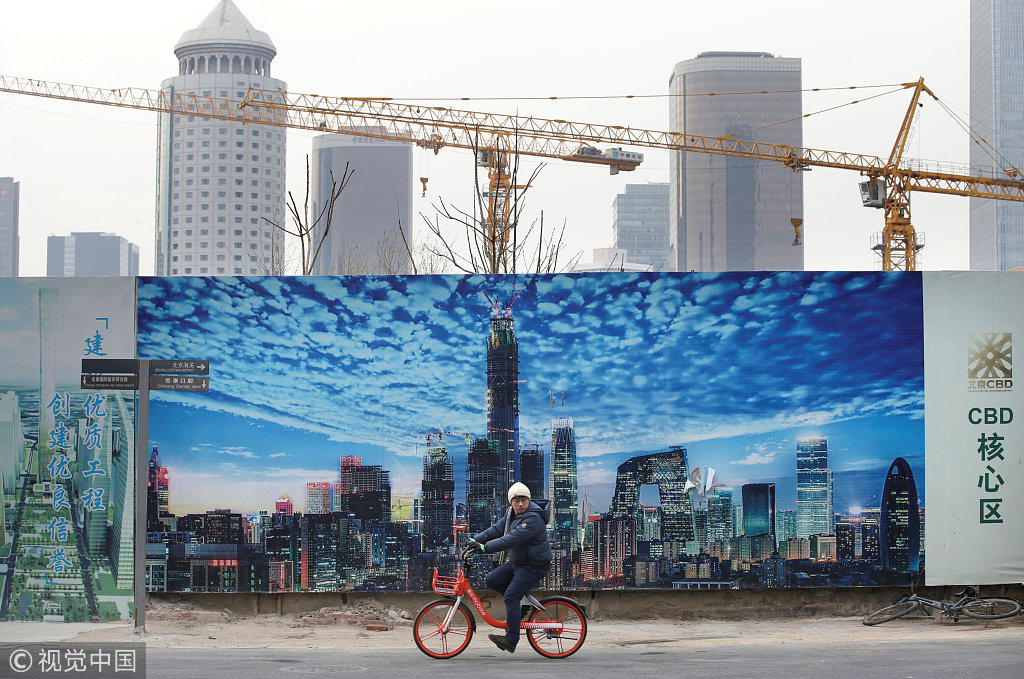
A man cycles outside a construction site in Beijing's central business area, January 18, 2019. / VCG Photo
A man cycles outside a construction site in Beijing's central business area, January 18, 2019. / VCG Photo
That is, in addition to the mantra of “innovation, technology and entrepreneurship,” one should also heed the imperative of their institutional context. The real focus, therefore, must be on “letting the market play a decisive role” in resource allocation and at the same time on “building the rule of law,” such that the country is better positioned to roll back a plethora of administrative monopolies that have often stifled rather than inspired innovation and entrepreneurship.
That agenda also has to include deeper educational and SOE reforms. For, put in a global perspective, the evidence is compelling that sustained growth toward and beyond the average world performance (at about 11,000 U.S. dollars per capita) would require enhanced institutional quality broadly conceived, i.e., human capital formation, robust market and the rule of law. And compared with these intangible assets, tangible physical capital input would increasingly become less important as a driver of growth.
Looking forward, China should redouble its efforts, and yes, with a sense of urgency, to build these intangible assets as long-term growth drivers. For, without which, the mere exercise of macro-economic stabilization tools would only add huge costs to future growth.
(Cover photo: An aerial shot of Suzhou Industrial Park's Central Business District, Suzhou, Jiangsu Province, China, July 20, 2018. /VCG Photo)
(If you want to contribute and have specific expertise, please contact us at opinions@cgtn.com.)

SITEMAP
Copyright © 2018 CGTN. Beijing ICP prepared NO.16065310-3
Copyright © 2018 CGTN. Beijing ICP prepared NO.16065310-3